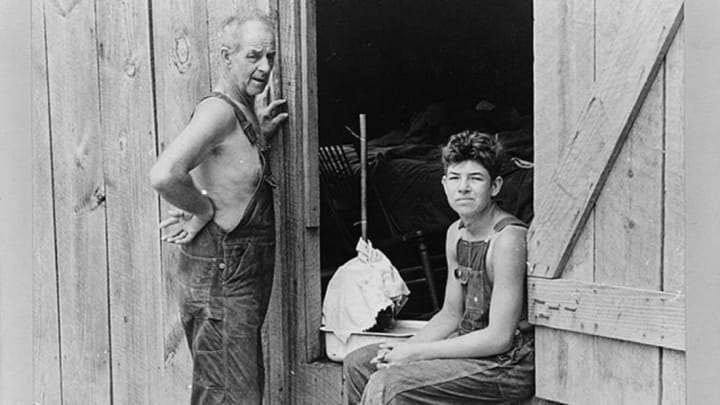Between 1935 and 1944, the U.S. government set out to prove that federal recovery programs enacted during the Great Depression were working. The Farm Security Administration and the Office of War Information hired photographers like Dorothea Lange and Walker Evans to document the realities of poverty in America and show federal relief programs at work. Photographers were sent out all over the country, sending their negatives back to Washington D.C. where they grew into a 170,000-image collection.
Now housed at the Library of Congress, Yale University has made these historic images available in a set of interactive maps that show exactly where photographers traveled during that time. Yale’s Photogrammar project creates a new web platform that allows you to examine the exhaustive archive through different means, sorting by geography, subject, and eventually, image characteristics like hue and color.
Below are just a few of the collection's many highlights:
Dust Bowl refugees along a highway near Bakersfield, California in November 1935:

Image Credit: Dorothea Lange via Photogrammar
A grandmother from Oklahoma living in a migrant camp in California, 1936

:
Image Credit: Dorothea Lange via Photogrammar
The daughter of an Alabama sharecropper, 1935:

Image Credit: Walker Evans via Photogrammar
Billings, Montana, 1939:

Image Credit: Arthur Rothstein via Photogrammar
A Japanese-American internment camp in California, 1942. The image caption refers to the camps, later admitted to be a major civil rights violation, as “war emergency evacuation."

Image Credit: Unknown photographer via Photogrammar
Explore more images here.
